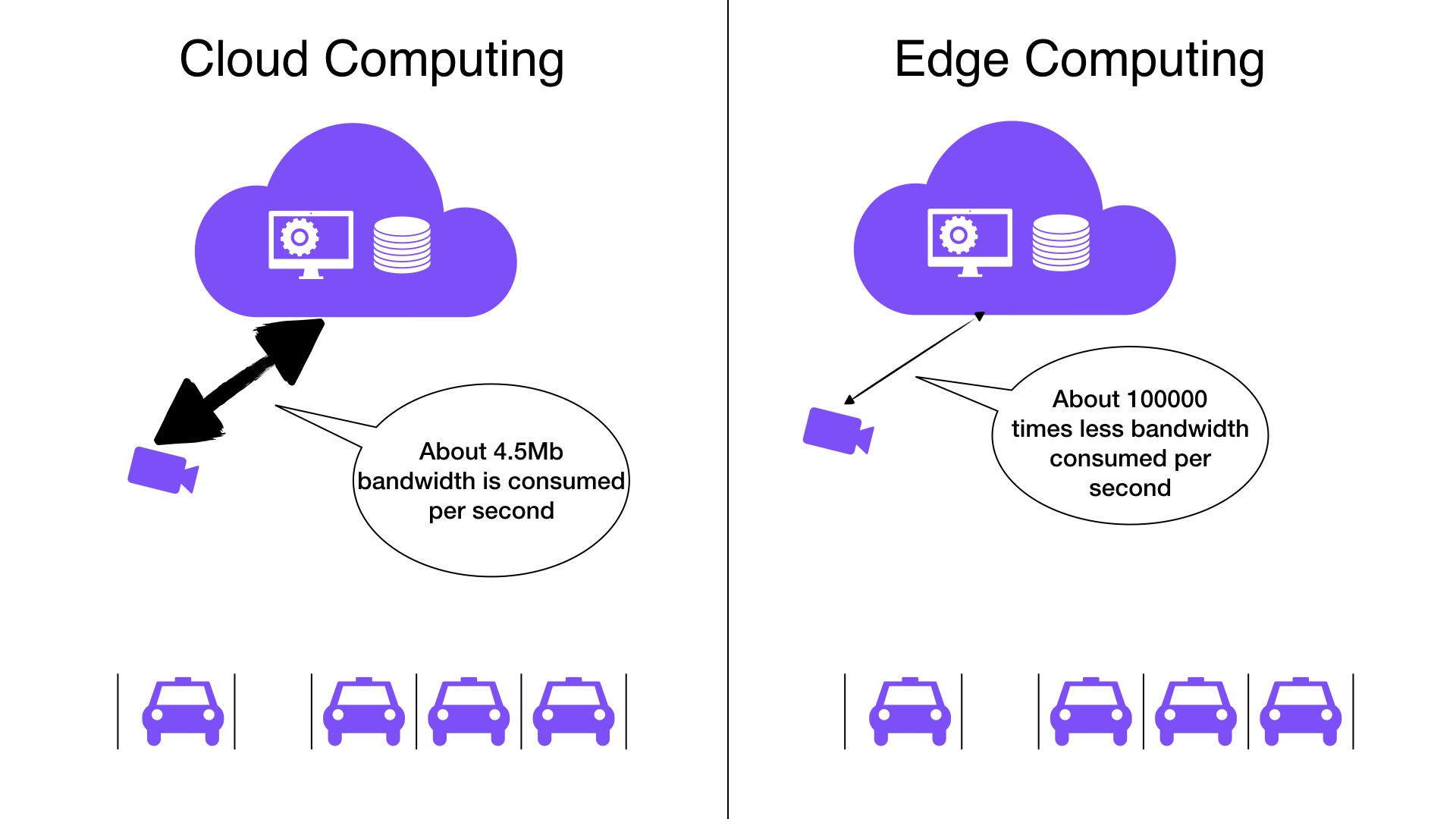
| |
Edge computing versus cloud computing
|
Definition
Edge computing is essentially a distributed computing paradigm that brings computation and data storage closer to the location where it is needed, to improve response times and save bandwidth.
Cloud computing is essentially the practice of using a network of remote servers hosted on the internet to store, manage, and process data, rather than a local server or a personal computer.
Essentially, edge computing is all computing outside the cloud happening at the edge of the network, and more specifically in applications where real-time processing of data is required. Cloud computing operates on big data
while edge computing operates on "instant data", that is real-time data generated
|
|
 |
| Edge computing versus cloud computing
|
|
|
|
|
|

|
|
|
Advantages of edge computing
|
Maximising network speed
Time is money in business, every second counts. Downtime or latency can cost thousands of pounds. In computer networking, “latency” concerns how much time it takes for a data packet to travel from one designated point to another. Ideally, latency will be as close to zero as possible. Network latency can be measured by determining the round-trip time (RTT) for a packet of data to travel to a destination and back again.
Edge computing has the capability to increase network speed by reducing latency. It greatly reduces the distance it should travel by processing data closer to the source of information. Speed, quality and the responsiveness of the overall service
is thereby increased.
|
More secure than the cloud
During the ongoing COVID 19 Crisis, with many people working away from the office at home, there is a great increase in data being accessed remotely. Increased incidences of remote access give cyber criminals a greater opportunity to access company data and misuse the information within. With edge computing, data is filtered and processed locally, rather than sending it to a central data centre, before being sent to the organisation’s network core via the cloud. If there is less transfer of sensitive data between devices and the cloud, this means better security for business and their customers.
|
Reliability
Most of the time edge computing does not depend on an internet connection and servers, it offers an uninterruptible service. Users do not need to worry about network failures or slow internet connections. Moreover, it can store and process data locally by using microdata centres. Thus a reliable connection can be assured for IoT devices. Therefore, edge computing is recommended to be used in remote locations where there is no reliable network connection.
|
Reduced Cost
Adopting an IoT service can be costly due to their need of more network bandwidth, data storage and computational power. Using edge computing for IoT allows users to reduce the bandwidth and data storage requirement and replace datacentres with device solutions. Thus, there is a significant cost reduction in implementing IoT devices and applications and reducing bandwidth.
|
|
|
|
|


|
|
|
Disadvantages of edge computing
|
Security issues
Ensuring adequate security can be often challenging in an edge distributed environment. Due to the fact that data processing takes place at the outside edge of the network there are often risks of identity theft and cyber security breaches. Additionally, whenever a new IoT device is added, it will increase the opportunity for the attackers to infiltrate the device.
|
 Investment costs
Investment costs
Implementing edge infrastructure can be costly due to its complexity which needs additional equipment and resources. In addition, the IoT device with edge computing comes with the need
for more local hardware for them to function. This can increase overall efficiency but requires heavy investment.
|
Maintenance issues
Unlike a centralized cloud architecture, edge computing is a distributed system. Which means that there are more and various network combinations with several computing nodes. This requires higher maintenance cost than a centralized infrastructure.
|
Conclusion
As more people are working away from the office there is a much greater need to access data remotely. Such remote access gives cyber criminals a greater opportunity to access and misuse company data. With edge computing, data is filtered and processed locally, rather than being sent to the organisation’s network core via the cloud. If there is less transfer of sensitive data between devices and the cloud, this means better security for business and their customers.
COVID-19 has undoubtedly altered the working landscape, which has meant business leaders having to rethink their remote working strategies. During this period, the cloud has allowed for data to be shared across organisations securely. However, there are clearly instances where edge computing can help to ease bandwidth, increase network speeds, and combat or at least reduce security concerns.
As remote working perhaps [?] becomes the new norm for businesses, it is predictable that the future network infrastructure will combine both cloud computing and edge computing
|
|
|
|
|

|
|




